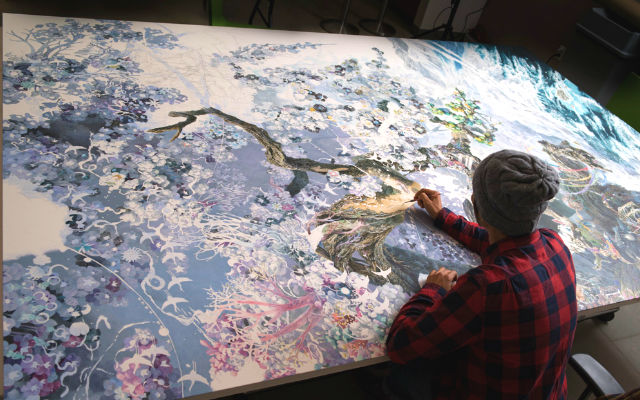
Source: Chazen Museum of Art
Japanese Artist Reveals Magnificent Pen & Ink Drawing 3.5 Years In The Making
- Source:
- Chazen Museum of Art / chazenartuw / Ikeda Manabu: Rebirth
Related Article
-

Can’t Eat Fish? Try Making Sushi With Vegetables Instead!
-

This Pokemon Go Parody Took It To A Whole Other Level
-

Rigid Rules Of Japanese Drinking Parties Broken Up By A Special A.I. Powered Fan–And Delicious Beer[PR]
-

Japanese Instant Noodle Company Imagines Cabbages as Cats to Get People to Stop Throwing Away Their Veggies
-

Japan’s Jumbo Shumai Dumpling cake is filled with even more delicious dumplings
-

Sip Coffee On Tatami Mats Inside A Century-Old Building At Kyoto’s Traditionally Japanese Starbucks


The amount of time and effort it takes to heal after a devastating disaster is immeasurable, and Japanese artist Manabu Ikeda poignantly depicted the entangled paths of the thousands of individuals striving to rebuild their lives after the 2011 Tohoku earthquake and tsunami in his recently completed masterpiece Rebirth. Using only pens to illustrate his enormous 13×10-foot artwork, he toiled 10 hours a day, 6 days a week, for 3.5 years before making his final stroke on his massive white canvas.
Ikeda began drawing Rebirth in 2013. From a distance, it looks like a brilliant tree standing tall amidst crashing waves of the tsunami, but with a closer look, it becomes evident that the larger image consists of a myriad of individual stories of those affected by the life-changing disaster, both human and of nature.
Ikeda, who works primarily with pen and acrylic ink, will be displaying Rebirth at the Chazen Museum of Art in Wisconsin for a brief period through December 11th, 2016. Visitors are invited to see this magnificent work of art up close, and behold the beauty of the seemingly chaotic elements that form the collective strength and courage of the Tohoku earthquake survivors.
Source: Chazen Museum of Art
Source: Chazen Museum of Art
Source: Chazen Museum of Art
Source: Chazen Museum of Art
Source: Chazen Museum of Art
Source: Chazen Museum of Art
Source: Chazen Museum of Art
Source: Chazen Museum of Art
Watch the process below: